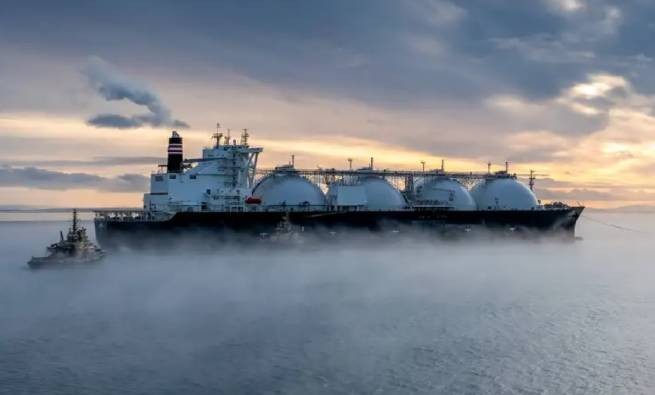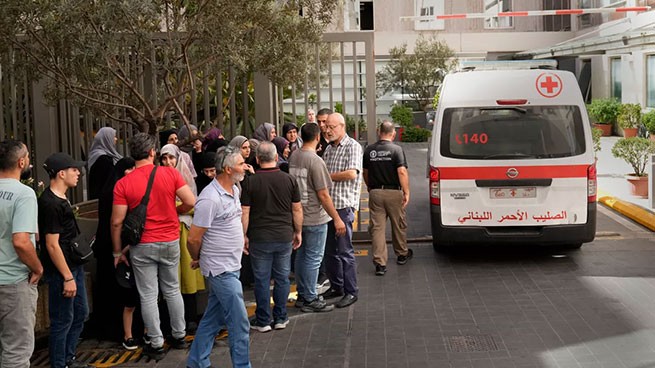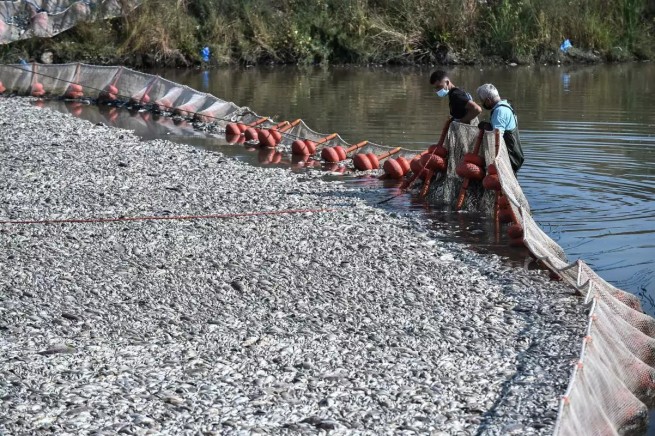Scientists have expressed strong concern about the future impacts of climate change on the environment and public health following the mass death of fish in the Pagasitikos Gulf in Volos.
The consequences of the storm “Daniel” will likely continue to affect the ecosystem and the inhabitants of Thessaly for a long time in terms of the tons of dead fish that will be generated.
Despite the fact that the solution to the problem of collecting fish, burning it and sanitary disposal was crowned with successhowever, the question remains about ways to combat such environmental disasters.
In an interview with iatropedia.gr, AUTH ecologist professor Dimosthenis Saryannis explains the main reasons that caused this terrible phenomenonand emphasizes that the disaster could have been prevented if preventive measures had been taken.
«The management, in my opinion, was correct, that is, in terms of transporting the fish, burning it and burying it. We avoided the problems of rotting and the growth of other pathogens and microorganisms. So I don’t think there is an urgent public health problem, and that’s good. The problem is that we have to manage the “health” of the ecosystem, because what happened showed us that we are very vulnerable“, – the professor notes. But what are the main reasons that caused this phenomenon in the Pagasitic Gulf and its images that flew around the world?
Mr. Sariyannis, as Director and Chairman of the Board of Directors of the National Research Foundation, participated in the work of the competent committeecreated for Restoring Thessaly from an environmental disasterThanks to his scientific knowledge and experience, he Explains 6 problems of ecological imbalance in simple wordswhich arose after the storm “Daniel” – the load on Lake Karla from materials carried by the flood, causing the death of fish. According to Demosthenes Sariyannis, the main factors that contributed to this phenomenon are the following:
- Increase in biogenic load from transported materials: The flooding in Karla and the surrounding area caused an influx of transported materials rich in nutrients (phosphorus, carbon, etc.). This promoted the growth of microorganisms and fish, creating eutrophication conditions.
- Eutrophication and oxygen deficiency. The overgrowth of the fish, combined with the reduction in water volume in the Lake Karla outflows, led to hypoxia (low oxygen levels in the water), causing the fish to suffocate.A very large population of fish has less oxygen, and as a result the fish develop hypoxia or anoxia – depending on the conditions – and die. Many fish even had embolism, and so they rose to the surface“, explains Demosthenes Sariyannis.
- Toxic bloom of microorganismsA significant increase in the number of microorganisms, some of which have toxic properties, caused further death of fish, poisoning the environment.
- Temperature increase and water evaporationThis summer, very high temperatures increased water evaporation and reduced oxygen solubility, worsening hypoxia.
- Freshwater fish influx into Pagasitikos: After the flood, freshwater fish migrated to Pagasitikos via the floodplain of Xiria. Contact with seawater led to bubbling (salt entering their bodies), which led to their death.
- Enclosed bay and current-borne materials: Pagasitikos, as a closed gulf, did not have the necessary marine turbulence to sufficiently saturate the water with oxygen. The increase in temperature and the materials carried by the floods also had a negative impact on marine fish, the scientist concludes.







More Stories
Water Spout in Halkidiki
Supreme Court calls for "vigilance" in relation to those who "uses water illegally"
Destructive weather hits Meteora: floods, rockfalls, landslides